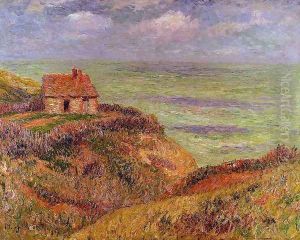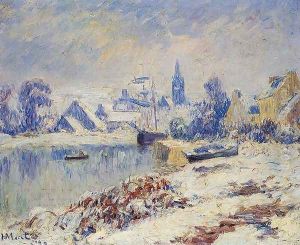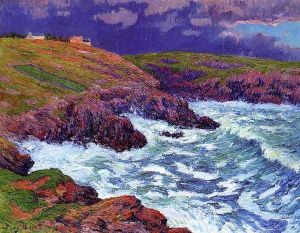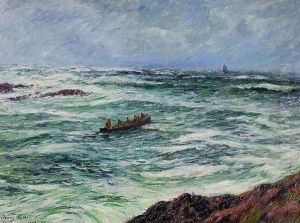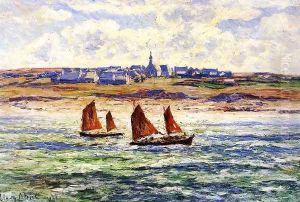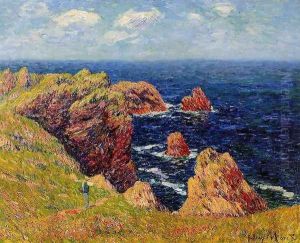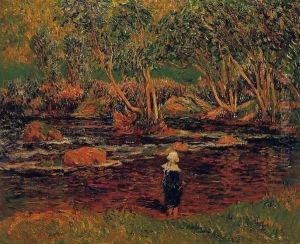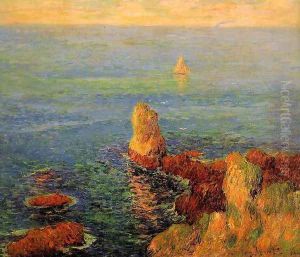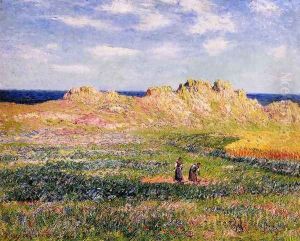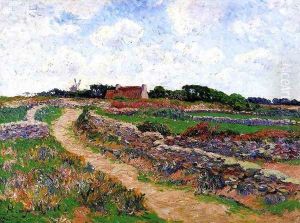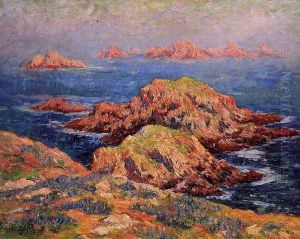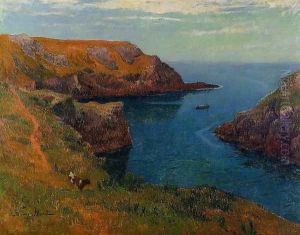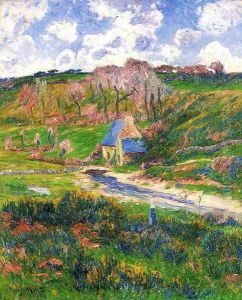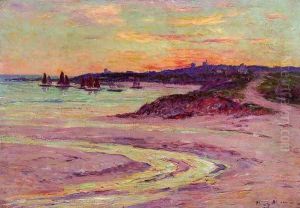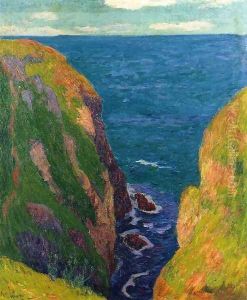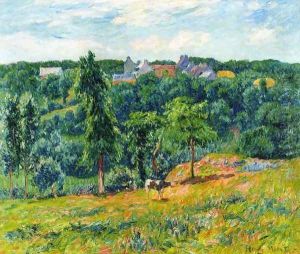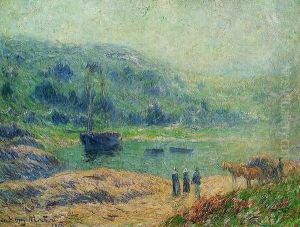Henri Moret Paintings
Henri Moret was a French Impressionist painter known for his landscapes of Brittany and the coast of France. Born on December 12, 1856, in Cherbourg, Moret's early artistic career began under the tutelage of Ernest Coroller, a painter who focused on the Breton landscape. Moret moved to Paris in his twenties, where he was influenced by the Impressionist movement, which was then gaining momentum. He studied at the École des Beaux-Arts and later under Jean-Paul Laurens.
Moret was particularly influenced by the works of Claude Monet and became closely associated with the Pont-Aven School, a group of artists centered around the small Breton village of Pont-Aven. The School is often associated with Paul Gauguin, who was a leading figure there. Moret developed his own style within the Impressionist framework, characterized by a vivid color palette and dynamic brushwork, which captured the varying atmospheres of the landscapes he painted.
Throughout his career, Moret remained dedicated to depicting the Brittany region, its rugged coastlines, and its rural landscapes. He frequently painted en plein air (outdoors), a hallmark of the Impressionist technique, which allowed him to capture the transient effects of light and weather on the natural scenery. His paintings often feature the sea, with its shifting colors and moods, which he portrayed with a sense of immediacy and spontaneity.
Henri Moret exhibited his work at the Salon des Indépendants and the Salon de la Société Nationale des Beaux-Arts, among other exhibitions. His work gained recognition during his lifetime and was collected by several prominent art patrons of the period. After his death on May 5, 1913, in Paris, Moret's contributions to the Impressionist movement continued to be celebrated. Today, his paintings can be found in museums and private collections around the world, appreciated for their rich depiction of the French landscape and their embodiment of the Impressionist ethos.









